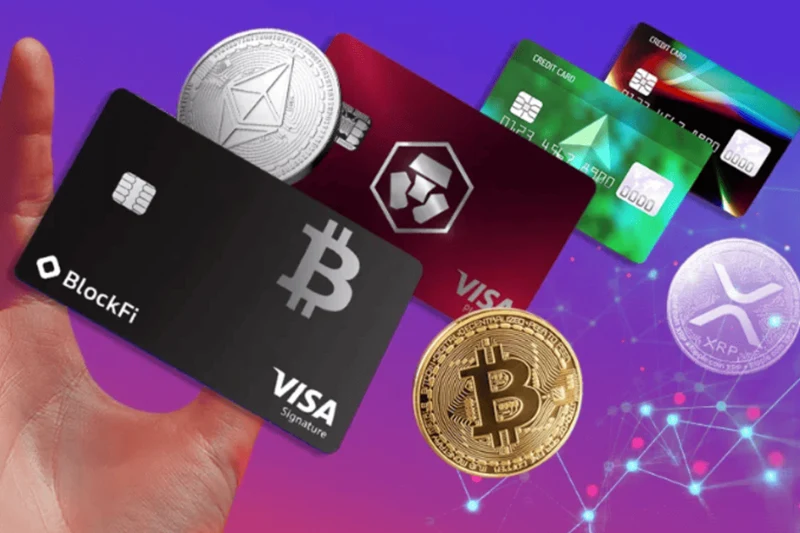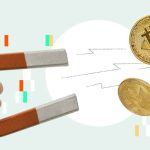Hidden Fees on Crypto Exchanges: Unveiling the Costly Secrets
You think you’ve just made a smart crypto trade, but the thrill fades when unexpected costs pop up. Welcome to the world of hidden fees on crypto exchanges. They snag your profits when you’re not looking. This post cuts through the haze and shows you exactly where they hide. From the basic transaction costs to the sneakier charges, I’m laying it all out. No more nasty surprises. Read on, and let’s start saving your hard-earned cash.
Identifying Cryptocurrency Exchange Fees: The Basics of Transaction Costs
Understanding the Different Types of Crypto Exchange Fees
When we talk about crypto exchange fees, I want you to think of them as the price of doing business in the world of digital currency. Every trade, every coin shift from a wallet, they all have costs tied to them. Some are right there in the open—easy to spot. Others, well, they like to hide, just waiting to take a bite out of your coin purse when you aren’t looking.
Let’s get one thing clear. Not all fees are out to get you. Most are just part of the game. Like the fee for making trades, called maker-taker fees. If you make a trade that matches right away, they call you a taker. You take an offer someone else made. If your trade sits on the book waiting for someone to match with it, they call you a maker, because you make the offer.
Next up, consider the fees for putting money in, taking money out. We call them deposit charges and crypto withdrawal fees. And they can vary—a lot. One place might let you add money for free, while another takes a small cut. Taking money out? Almost always costs you. Watch out for high fees here, especially if you move money often.
Recognizing Standard Charges: From Deposit to Withdrawal
Now, we’ve got to talk standard charges. You might think putting money in, taking it out—that’s easy land. But quick, place your hand on your coin stash, because these can sneak up on you too. Deposit charges can come from the platform, but also from the method you use to pay. Credit card, wire transfer, each has its own fees. And they stack up.
Crypto withdrawal fees are the exit tolls of the crypto road. Sometimes they’re flat, other times they’re a percentage of your haul. The trouble comes when you’re rushing, need to move fast, and you don’t check the costs. Then, whoosh, there goes a good chunk of your crypto.
Hidden trading costs, the ones you’re not supposed to see, they’re the worst. They could be tiny, delicate surcharges on each trade, or a cost for simply moving your coin from one type of wallet to another. And then you have the spread—the difference between the buying and selling price of your coin. It’s a secret bite that many don’t count, but it adds up.
Always read the fine print. I know, no one loves that. But those long, boring documents—they’re where exchanges tell you about every fee they can legally charge. They hide nothing because they told you—technically. When you understand the crypto fee monsters lurking in that text, you’ll be one step ahead.
And remember, in crypto, details matter. The more you know, the less you pay. So let’s keep our eyes wide open and wallets tight. There are ways to avoid the traps, save on fees, and make smarter, cost-effective trades. Let’s get to it!
The Hidden Costs of Digital Currency Exchanges: What You Don’t See
Unpacking the Maker-Taker Pricing Model
When you trade crypto, two main fees can hit you hard. The maker fee and the taker fee. Let’s break these down. Maker fees apply when you add orders to the market. Your order sits and waits to be matched. You’re making the market. Taker fees are for when you match with an existing order. You take the market.
Maker-taker models can hide big costs. Some exchanges love to offer “low” fees up front. But they catch you with higher taker fees later. It’s a sneaky way to make more money off you. They draw you in, betting you won’t notice the hike in cost when taking orders.
Trying to find the best deal? You must look close. The real deal hides in the mix of these fees. Reading the fine print on crypto fees matters. I’ve seen many traders fall into this trap. They think they’re getting a steal, only to pay more in the end. It’s a classic move. But now, you know. Watch those maker-taker fees.
Decoding Network Fees and Why They Matter
Now let’s talk about network fees. Crypto doesn’t move itself. It needs a network to travel. And this network asks for a toll – a network fee.
What makes this tricky? These charges can change. A lot. It depends on how busy the network is. Imagine rush hour traffic but with Bitcoin. Too many cars? Higher tolls. Same for crypto.
But why care about this? It’s about timing. Move your crypto when the network is quiet, and you’ll pay less. Move it at peak times, and the fee bites harder. This isn’t money you pay to the exchange. This is for the miners or validators who keep your crypto moving.
Some folks ignore these fees. Big mistake. You must know the network fee explanations. They can eat into your trading success, especially with small trades. A high network fee can turn a smart move into a loss.
Never thought checking traffic would help with crypto? Well, now you know. Timing is everything. And it’s not just about buying low and selling high. It’s about moving your money smartly. Cut down those unexpected exchange expenses.
Many exchanges won’t tell you this straight up. That’s where I come in. I’m here to shine a light on this. Spotting hidden fees in crypto is like finding needles in a haystack. Tough, yes. But doable.
Hidden fees change the game of trading. But with the right info, you can dodge these traps. Let’s keep our trades cost-effective. No likes bad surprises, especially in your wallet. Keep these tips in your back pocket and trade smart.
Avoiding Traps: Strategies to Minimize Unforeseen Crypto Charges
Selecting the Right Platform: Comparing Exchange Fee Structures
Finding a good crypto exchange can be tough. Many have hidden fees. How? Well, some charge more for withdrawals. Others have high costs for trading. It’s like finding a sneaky trap in a treasure hunt. You think you hit the jackpot. But then, surprise! You’re paying more than you thought. The key is to compare. Look at what different exchanges charge. Some might have low trading fees but get you with withdrawal costs. Others might seem high but are actually cheaper when you add it all up.
When we’re fishing for a low fee place, we can’t just look at one kind of cost. We’ve got to look at all of them. Now, let’s break it down. We’ve got trading fees—those are maker-taker charges. They can vary a lot. Some platforms like to show low fees up front. But when you trade a lot, they bite back with higher rates. Next are the withdrawal fees. Those can be sneaky. Always check these before you move your coins out. Finally, we have deposit charges. Most times, they’re not too bad. But you have to watch out; some can surprise you with a high fee.
Tools and Practices for Spotting Hidden Fees in Crypto Transactions
Spotting hidden fees isn’t magic. It’s about being smart and using tricks. Want to be a fee detective? Start with the fee schedule. It’s like a map. Read it close. Look for terms like ‘spread’ or ‘margin.’ These words hint at extra costs. Also, watch for changes. Exchanges update fees, and not always with a big warning. Get an app for tracking fees. This can be a game-changer. It helps you see fees right away, without doing math all day.
Another good trick is to test with a small amount. Send a little crypto before you do a big move. This shows you the real deal on fees. Don’t fall for the “no fee” trick. Even if there’s no trading fee, there might be other costs. Like when you use a card to buy crypto. Or when you move your coins to your own wallet.
Trust me, I’ve seen all kinds of fee traps. Bad ones hide the details in tiny print. Or they mix in “network fees” that seem like they’re not part of the exchange. But they are. Some even change fees based on how busy the network is. So, if it’s a busy day, you pay more. Crazy, right? But you can beat this by trading at off-peak times.
Remember, the best platform for you isn’t just about low fees. It’s also about trust and good service. Don’t just go for the cheapest. Go for one that treats you fair. Read reviews, join community chats, and ask questions. Find an exchange that’s cool with sharing all their info. That’s your treasure in this hunt.
No one likes to pay more than they should. The crypto world can trip you up. But with these strategies, you’re set to avoid those hidden fee traps. Keep your eyes open, and happy trading!
Transparency in Blockchain Trading: A Guide to Fair Fees
Advocating for Complete Cost Disclosure in the Crypto Space
As a crypto exchange fee analyst, I dive deep into the real deal with trading costs. The truth is, not all fees are clear. This hurts you, the trader. Some costs hide under big words or small print. “Hidden trading costs,” “undisclosed crypto fees,” or “unexpected exchange expenses,” crop up. They can bite into your profits. But why should you care about these costs? Because every penny counts.
For instance, you see “crypto withdrawal fees” on every exchange. But how much? The amount varies greatly. And “deposit charges on exchanges”? These can sneak up on you. I hunt down these sneaky fees to keep your trades fair. Often, “crypto transaction charges” aren’t the same across the board. I ask exchanges tough questions, demanding clear answers.
Avoiding “hidden surcharges in blockchain trades” is my thing. Say no to surprises in your trade costs. Did you know some platforms use “maker-taker fees”? In simple words, if you add to the market (maker), you pay less. If you take from it (taker), you pay more. I explain these to help you save money.
These pesky hidden fees show the real “cost of crypto trading.” My job is to reveal them, keeping trading honest for everyone.
Fostering Fair Trading Practices Through Informed Decisions
Making smart trading choices means more than finding a low-price exchange. It means understanding “transparency in exchange pricing”. Trading should be fair game. It’s not just about chasing the “best crypto exchange for low fees”. I guide folks towards exchanges that don’t trick traders with hidden costs.
Real talk: Some say “no fee crypto trading” is real—but it’s often a myth. Exchanges make money, one way or another. “Low fee crypto exchange identification” means digging into where they might catch you off guard. My advice? Always read the fine print. Look out for words like “spreads” or “commission secrets.” These are places where extra costs hide.
The key to “cost-effective crypto trading” is knowledge. Know what “network fee explanations” mean. These fees move your transaction on the blockchain, and they change often. Also, watch “crypto exchange fee comparison” like a hawk. It’s all about catching those “undisclosed crypto fees” before they catch you.
In sum, I’m here to champion for “cost transparency in blockchain exchanges”. I work to light up the dark corners where fees hide. Reading “the fine print on crypto fees”? I’ve got your back.
Trading can be a jungle, with plenty of fee traps lying in wait. My role is to cut through the brush, giving you the clear path to fair, honest, and cost-effective trading. Consider me your guide in this complex terrain. And remember, the right knowledge isn’t just power—it’s also savings in your pocket.
In this post, we’ve looked at the costs you face when trading cryptocurrencies. You now know the types of fees to expect, from the basics to the hidden ones. Network fees, standard charges, and the maker-taker model are all key. We also went over how to dodge extra costs by choosing the right exchange and using smart tools.
Always aim for exchanges that show all their fees up front. This helps you trade fair and avoid surprises. By staying informed, you can keep more of your money and worry less. Remember, a smart trader is a successful trader. Keep these tips in mind to make the best choices in crypto trading.
Q&A :
What exactly are hidden fees on crypto exchanges?
Hidden fees on cryptocurrency exchanges refer to charges that users may incur that are not immediately transparent or publicized by the exchange. These costs can manifest in several ways, such as withdrawal fees, trading fees that are higher at lower volumes, inactivity fees, or charges for depositing or converting currencies. It is important for users to review the exchange’s fee schedule and terms of service carefully to avoid any unexpected charges.
How can I identify hidden fees when using a cryptocurrency exchange?
To identify hidden fees on a cryptocurrency exchange, comprehensively review the exchange’s fee structure often found on their website. Also, scrutinize the user agreement for any mention of additional charges. Keep an eye on trading, withdrawal, and deposit fees, and be aware of minimum withdrawal limits which can indirectly lead to higher costs. Additionally, check for fees related to inactivity, maintenance, or operations that go beyond standard trading activities. Monitoring your transaction history for discrepancies is another way to identify unexpected fees.
Are all cryptocurrency exchanges transparent about their fee structures?
Not all cryptocurrency exchanges are fully transparent about their fee structure. Although many exchanges provide a list of fees related to trading and withdrawals, some may not clearly disclose fees associated with secondary activities or services until the user engages in the transaction. Transparency varies greatly across exchanges, and users are encouraged to conduct thorough research or reach out to customer support for full details on any costs that might be incurred.
Can hidden fees on crypto exchanges be avoided or reduced?
Hidden fees on crypto exchanges can often be avoided or reduced by thoroughly understanding the exchange’s fee policy. Choosing an exchange with a reputation for transparency can also be beneficial. Some exchanges offer reduced fees for higher-volume trading, maintaining a balance of their native cryptocurrency, or using specific payment methods for deposits and withdrawals. It’s advantageous to compare exchanges and be mindful of each platform’s specific incentives or loyalty programs that could lead to lower fees.
Do hidden fees affect the profitability of trading cryptocurrencies?
Hidden fees can indeed affect the profitability of trading cryptocurrencies, especially for frequent traders or those operating with smaller margins. They can chip away at your returns if not accounted for properly in your trading calculations. These fees can include costs associated with trading, withdrawals, deposits, and currency conversion. For profitability, it’s essential to factor all potential fees into your investment strategy and consider them when calculating the cost-benefit of each transaction.






